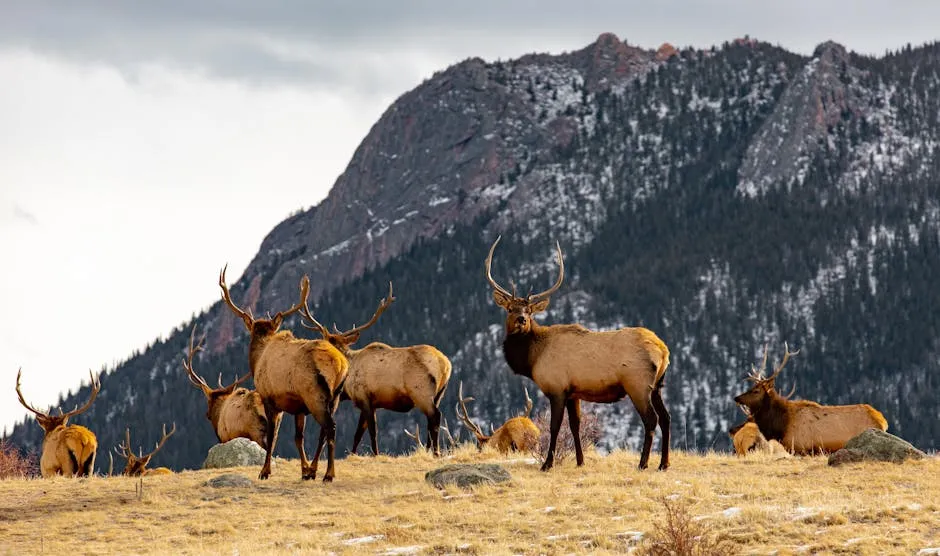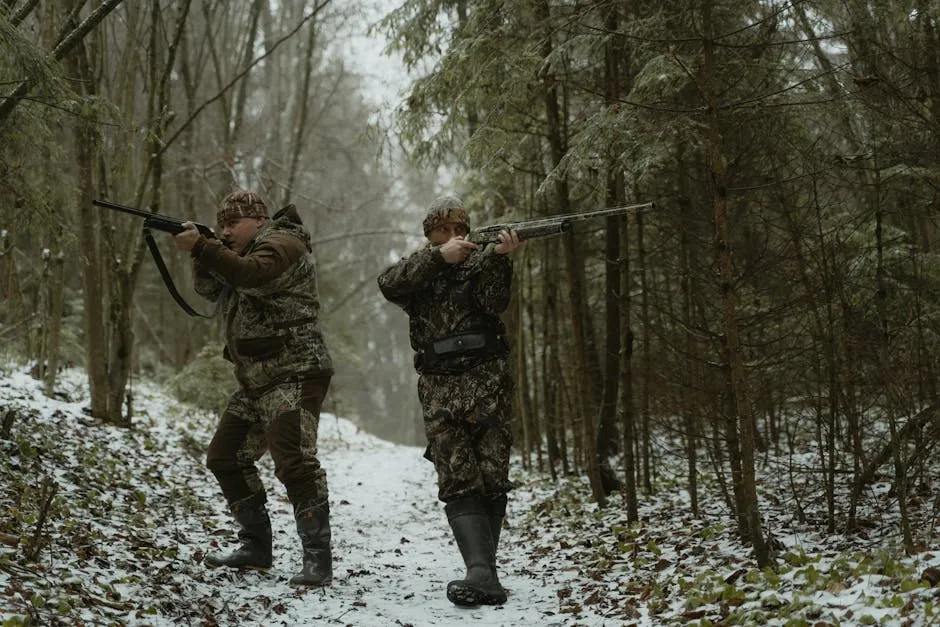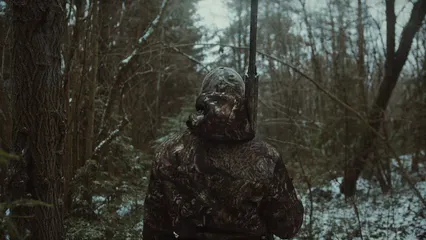Introduction
Big game hunting in Colorado is a cherished tradition. For many, it’s more than just a sport; it’s a rite of passage. With majestic landscapes and a variety of wildlife, Colorado offers some of the best hunting experiences. From elk to deer, moose to pronghorn, the state is teeming with opportunities for hunters of all skill levels.
The popularity of big game hunting is evident. In recent years, hundreds of thousands of hunters have flocked to the state each season. Hunting not only fosters a connection to nature but also plays a crucial role in wildlife management and conservation. Responsible hunters help maintain balanced ecosystems while enjoying the thrill of the chase.
So, what can readers expect from this article? We’re diving into the nitty-gritty of Colorado big game statistics. We’ll cover essential topics like draw odds, harvest data, and population estimates. These insights are vital for both novice and seasoned hunters alike.
Understanding these statistics is crucial for making informed hunting decisions. Knowledge of draw odds can mean the difference between bagging that trophy elk or coming home empty-handed. Similarly, knowing harvest data helps identify successful hunting areas. Population estimates guide hunters on what to expect in terms of wildlife availability. In short, statistics are your best friend in the wild.
With that in mind, let’s unravel the intricacies of Colorado’s big game statistics. This journey will empower you to enhance your hunting strategies, ensuring a successful and enjoyable experience in the great outdoors.

Understanding Colorado Big Game Statistics
What Are Big Game Statistics?
Big game statistics encompass a range of data that informs hunters about the hunting landscape. This includes details about hunting licenses, draw odds, and harvest reports. Knowing these stats helps hunters plan their trips effectively. For instance, draw odds indicate how likely you are to get a license for a particular species. Harvest reports provide insights into successful hunts, showing which areas yield the best results.
For those embarking on your hunting adventures, a Hunting Backpack is an essential piece of gear. It keeps your hands free while ensuring that all your hunting essentials are organized and easily accessible. Imagine trudging through the woods with a backpack that feels like a feather instead of a boulder – that’s the dream, right?
Key Categories of Statistics
Draw Statistics: Colorado employs a draw system for limited licenses. Hunters must apply, and the odds of drawing a license vary by species and hunting unit. Each year, the application process kicks off, and deadlines are strictly enforced. Missing a deadline can mean waiting another year for your desired hunt.
Harvest Data: Harvest data is collected through surveys and reports. Colorado Parks and Wildlife (CPW) conducts annual surveys to gather information about how many hunters were successful. This data is crucial for wildlife management. It helps regulate animal populations based on hunting success and ensures sustainable practices.
Population Estimates: Population estimates are derived from various studies and monitoring efforts. Biologists assess species populations regularly to gauge their health and sustainability. These estimates allow hunters to understand the availability of game in specific areas and make informed choices about where to hunt.
Sources of Data
Colorado Parks and Wildlife (CPW): CPW is the primary source for hunting statistics in Colorado. They provide comprehensive reports on draw odds, harvest data, and population estimates. Their website is a treasure trove of information that every hunter should bookmark.
Third-Party Websites and Research Tools: Websites like Toprut and the Archery Trade Association offer additional insights and tools. They provide advanced filtering options, application trends, and detailed unit profiles, helping hunters strategize better. Using these resources can give you an edge in your hunting endeavors.
While you’re planning your hunting trips, don’t forget to check out a Hunting Binoculars. They’re perfect for spotting that elusive game from a distance, allowing you to plan your approach without startling your prey. Your eyes will thank you!
In conclusion, understanding Colorado’s big game statistics is vital for hunters. By leveraging this data, you can enhance your chances of success and contribute to responsible wildlife management. Now, let’s gear up and dive deeper into the specifics of elk statistics next!

Detailed Breakdown of Elk Statistics
Elk Hunting in Colorado
Overview of Elk Species
Colorado is home to two primary elk species: the Rocky Mountain elk and the Merriam’s elk. The Rocky Mountain elk is the most commonly hunted species, boasting a robust population. These majestic creatures can be found in various habitats, from the high, rugged mountains to open meadows and dense forests.
The Rocky Mountain elk, with its impressive antlers, is a favorite among hunters. They thrive in habitats that provide food and cover, often venturing into open areas during early mornings and late evenings. In contrast, the Merriam’s elk, while less common, can be spotted in the mountainous regions of Colorado. They prefer higher elevations and are known for their adaptability to steep terrains.
Understanding the habitats of these elk species is crucial for hunters. Knowing where to find them can significantly impact your hunting success. Whether you’re stalking them in the peaceful woods or listening for their distinctive bugle in the crisp mountain air, recognizing their habitats and behaviors makes for an exhilarating hunting experience.
Elk Draw and Harvest Reports
Draw Recap Reports: Navigating the draw system for elk licenses can be tricky. Colorado Parks and Wildlife (CPW) provides Draw Recap Reports, essential for understanding how many licenses are available, the number of applicants, and the success rates for drawing a license.
These reports summarize pre-draw applications based on hunt code and preference points. They also detail post-draw results, showing how many hunters were successful. For instance, in the 2023 Draw Recap Report, over 75,000 hunters applied for elk licenses, with only 23% securing one. This statistic highlights the competitive nature of elk hunting in Colorado.
Understanding how many preference points it takes to draw a license is vital. The more points you accumulate, the higher your chances. A little patience can lead to the ultimate reward: a successful elk hunt.
Harvest Reports: Harvest Reports provide a wealth of information on elk harvested in recent years. In 2022, for instance, hunters harvested approximately 39,000 elk, with a success rate hovering around 18%. This figure varies by method, as bowhunters often experience different success rates compared to rifle hunters. For example, bowhunters had a success rate of 12% last season, while rifle hunters boasted a more impressive 23%.
Recent data shows that the eastern plains tend to yield higher harvest rates compared to the mountainous regions. This insight is crucial for planning your next hunting expedition. By focusing on areas with higher success rates, you can improve your chances of bagging that trophy elk.

Population Trends
Elk populations in Colorado are generally stable but can fluctuate based on various factors. In several Game Management Units (GMUs), such as 1, 2, and 3, populations are thriving due to effective management practices and favorable habitat conditions. For instance, GMU 1 has an estimated population of over 15,000 elk, while GMU 2 reports around 12,500.
However, challenges persist. Weather patterns, habitat loss, and hunting pressures can impact these numbers. For example, harsh winters can reduce calf survival rates, influencing overall population numbers in affected areas. Additionally, human encroachment on habitat leads to increased stress on elk populations.
It’s vital for hunters to stay informed about these trends. Monitoring population shifts helps determine where to hunt and the sustainability of elk populations. Colorado’s management strategy aims to balance hunting opportunities with conservation efforts, ensuring that future generations can enjoy the thrill of elk hunting.
By understanding these statistics and trends, you can make more informed decisions and enhance your hunting experience in the beautiful Colorado wilderness.

Additional Big Game Statistics
Other Game Species
In addition to elk and deer, Colorado is home to other remarkable big game species, each with its own unique statistics. Let’s take a quick look at pronghorn, moose, and bighorn sheep.
Pronghorn: Known for their incredible speed, pronghorn are a favorite among hunters. In recent years, the estimated population of pronghorn has been around 80,000. Hunting success rates fluctuate, with approximately 20% of hunters bagging their target each season. These agile creatures roam the open plains, making them a challenge to hunt.
Moose: The moose population in Colorado is smaller, with estimates around 3,000 individuals. Despite their size, these magnificent animals can be elusive. Hunters typically see success rates hovering around 10%. Moose prefer wet, wooded areas, adding an extra layer of difficulty for those seeking to spot them.
Bighorn Sheep: Bighorn sheep are a sight to behold with their impressive curled horns. Colorado is home to about 7,000 bighorn sheep. This species is particularly popular among seasoned hunters, with harvest success rates around 15%. Their preference for rugged, mountainous terrain means that hunting them often requires a good amount of physical fitness and perseverance.

Special Reports and Trends
Secondary Draw Reports: Colorado’s secondary draw process offers hunters a second chance to acquire a license after the primary draw. This is particularly beneficial for those who may have missed out initially. The secondary draw typically includes leftover licenses and is held in late June. Statistics indicate that about 30% of applicants find success in this round, making it a valuable opportunity for eager hunters.
Tooth Age Data: Understanding the age of harvested elk and deer is crucial for wildlife management. Tooth age data is collected through a simple process: hunters submit teeth from their harvested animals. This data provides insights into population demographics and health. Analyzing the cementum annuli on these teeth allows biologists to estimate age, helping to manage sustainable hunting practices. This information is essential for maintaining healthy wildlife populations and ensuring future hunting opportunities.
Understanding Preference Points
Preference points play a significant role in the big game draw system in Colorado. When you apply for a hunting license, you accumulate points based on unsuccessful applications. The more points you have, the better your odds are for drawing a coveted license in the future.
For example, if you’re eyeing a particularly desirable elk unit, having preference points can significantly enhance your chances. Many hunters strategize their applications around accumulating points, waiting for that perfect moment to cash in on their investment. However, it’s important to note that points don’t guarantee a license; they simply boost your chances.
As you gear up for the upcoming hunting season, understanding how preference points work can help you make informed decisions about your applications. Whether you’re a seasoned hunter or a newbie, these insights will aid in unlocking your hunting potential in the stunning landscapes of Colorado.

Conclusion
Understanding big game statistics in Colorado is essential for every hunter. These statistics provide valuable insights into draw odds, harvest data, and population estimates. Knowing the numbers can significantly impact your hunting experience. For instance, being aware of the success rates can help hunters choose the best locations and times to pursue their quarry.
Moreover, these statistics are crucial for wildlife management. They help ensure sustainable hunting practices, protecting both the animals and their habitats. By analyzing trends and data, hunters can contribute to conservation efforts, making informed decisions that benefit wildlife populations.
So, don’t just wing it! Utilize the available statistics to sharpen your hunting strategies. Whether you’re a rookie or a seasoned pro, these insights can enhance your chances of success in the field. Remember, data is power, and when used wisely, it can lead to memorable hunting experiences.

Speaking of memorable experiences, don’t forget to pack a Portable Campfire for those chilly nights in the wilderness. It’s a fantastic way to cook up your dinner or simply gather around with friends for some storytelling under the stars.
We’d love to hear from you! Share your big game hunting experiences in Colorado. What strategies have worked for you? Have you encountered any interesting statistics during your hunts? Your insights can help fellow hunters navigate the wilds of Colorado, so don’t hold back!
FAQs
What is the best time to apply for a big game license in Colorado?
Timing is everything when it comes to applying for a big game license in Colorado. The primary application period is generally from March 1 to April 2, with a deadline of 8:00 PM MT. This applies to popular species like deer, elk, pronghorn, bear, and moose. Missing this window could mean waiting until next year, so mark your calendars! For those interested in bighorn sheep and mountain goat, the application period also runs from March 1 to April 2, but the results are usually available earlier, around mid-April. In addition, there’s a secondary draw period for leftover licenses. This takes place from June 20 to June 28. If you didn’t draw a license initially, this is your chance to snag one.
How can I check my draw results?
Checking your draw results is a straightforward process. Start by visiting the Colorado Parks and Wildlife (CPW) website. Navigate to the “Hunting” section, then select “Big Game” and look for “Draw Results.” Once there, you’ll need to enter specific details such as your hunting license number and personal information. After submitting, you’ll receive your results. If you encounter any issues or need further assistance, CPW offers a toll-free number and email support. You can reach out to them during business hours for any inquiries about your application status. Staying informed about your draw results is vital for planning your hunting season, so don’t hesitate to check back regularly!
What should I do if I didn’t draw a license this year?
Didn’t draw that coveted hunting license this year? Don’t fret! You still have options. First, check for leftover licenses. These are extra licenses that didn’t get claimed during the draw. They often become available in early August, so mark your calendar! Another option is to consider over-the-counter (OTC) licenses. Colorado offers OTC licenses for certain species, including deer and elk. These allow you to hunt without the draw stress. Just head to your local CPW office or their website for details. Remember, even if you didn’t draw a license, you can still enjoy the thrill of the hunt!
How are harvest statistics collected?
Harvest statistics are essential for managing wildlife populations. In Colorado, these stats come from surveys and reports. Each year, Colorado Parks and Wildlife (CPW) contracts an external firm to gather data from hunters. This includes questions about where and when they hunted, what they harvested, and their satisfaction with the hunt. Approximately 190,000 hunters are randomly selected to participate in this annual harvest survey. The collected information helps estimate harvest numbers and overall participation rates at the herd level. This data is critical for ensuring sustainable hunting practices and effective wildlife management.
Where can I find the latest population estimates for elk and deer?
Looking for the most current population estimates for elk and deer? Colorado Parks and Wildlife (CPW) is your go-to resource. Their website features comprehensive reports on wildlife populations, including elk and deer. Navigate to the “Hunting” section and look for “Big Game” statistics. You’ll find the latest population estimates and trends. These reports are updated regularly, ensuring you have the freshest data at your fingertips. Being informed about population estimates can significantly enhance your hunting strategies!
Please let us know what you think about our content by leaving a comment down below!
Thank you for reading till here 🙂
For a comprehensive overview of elk statistics, check out this colorado elk statistics guide.
All images from Pexels




